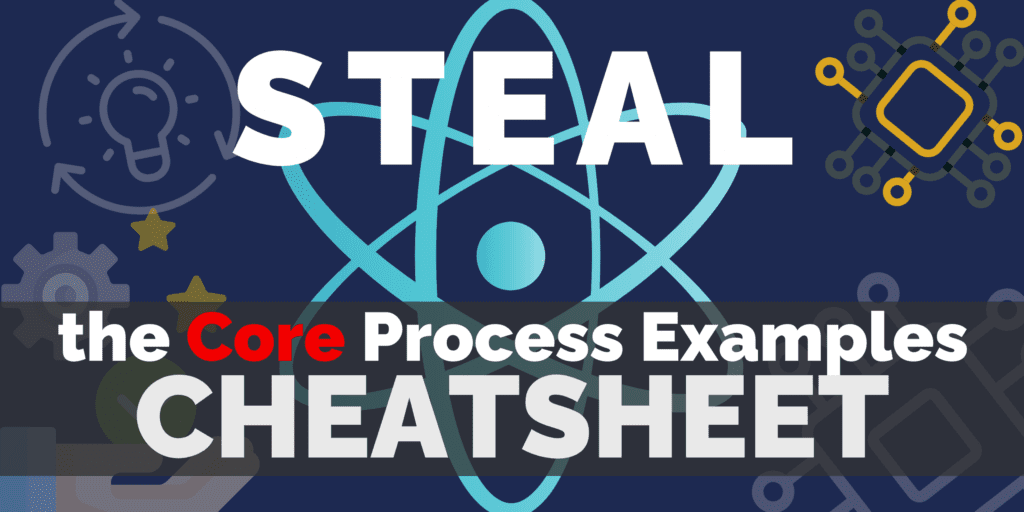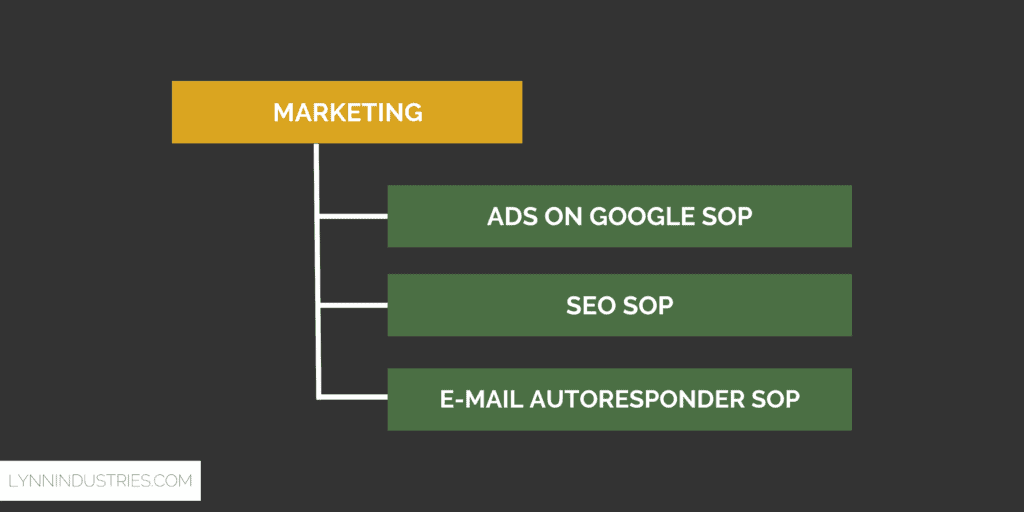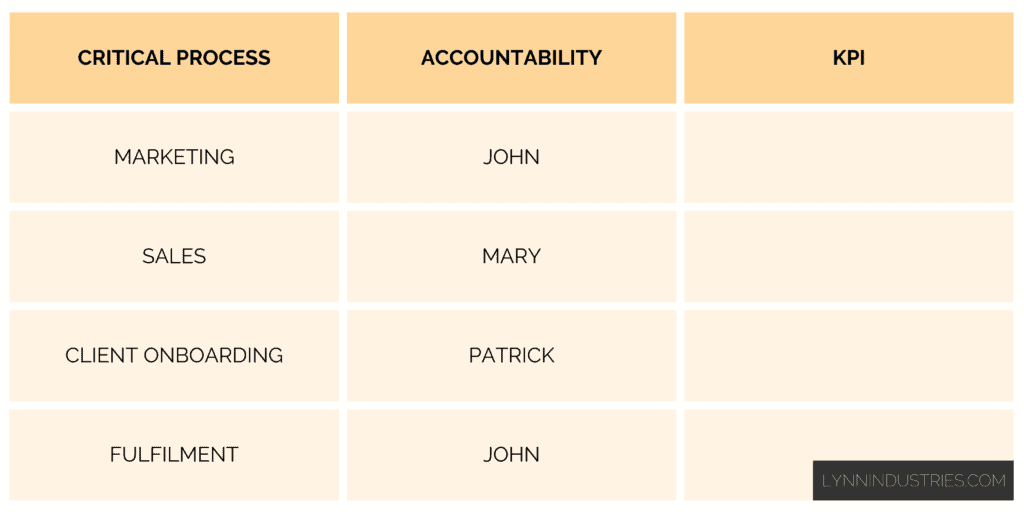
Every business has a set of 4-9 critical and core processes that drive the business.
These are high-level sets of actions that the business does in order to operate.
They are the main systems that make the business work day-to-day.
What Are the Normal Critical Processes in a Business?
The normal set of critical processes in most companies are:
- Marketing.
- Sales.
- Client onboarding.
- Delivery / fulfilment.
- Product / service development.
- Recruitment.
- Finances.
- Operations / management.
Why Are Critical Processes Important?

Knowing your critical process is great.
But why are they important, and how do you actually use them?
Efficiency and innovation
Critical process are essential for efficiency and innovation.
When people tell you to “systemise your business” and “work on your business” what they are really telling you is to improve your core processes. Mapping them down is the starting step.
Business can’t just “be improved” on their own.
It’s like renovating a house.
You don’t just look at the entire house and say, “let’s make it better”.
You need to break down the house into its component pieces, like the kitchen, bathrooms, garage, bedrooms, study and so on, and figure out how each will be improved.
For a business, these component pieces are your critical processes.
Improving any one of these processes usually ends up improving the entire business.
There is a strange synergistic effect that happens when you improve core processes. If you improve every critical process by say 20%, this doesn’t improve the entire business by just 20%.
It may improve it 100%, 200%, 2000%.
This is because different processes are weighted differently, and because improving the efficiency of one core processes typically improves the efficiency of other core processes “accidentally”.
Mechanism for scaling
You cannot scale a business without knowing what its core processes are.
This is because these processes are the levers or sub-functions you can pull to manipulate and improve the business overall. These processes drive metrics and in turn, drive profit.
A map of critical processes is literally the map of how the business works, and without it, you will never be able to scale and become a true business owner.
Standardisation
If you’ve done any SOP work in your business, you will know that SOPs have to come from somewhere.
And that somewhere is your list of core processes.
Like this:
Marketing is your critical process, and everything else are the SOPs that drive that critical process.
When all of these are written down, you have a standardised way of operating, and instructions can be handed from one person to the next.
This means less reliance on individual talent, less reliance on you as the business owner, and more reliance on the actual system.
Once you have your core processes written down, you have an operations manual and a guide for how to run the business. This not only lets you scale, it also opens up the option to potentially sell and exit the business at some point.
Identifying Critical Processes

Identifying the core processes in your business is simply a matter of sitting down with your leadership team and asking:
What are the pillars, process and procedures that really drive our business?
Or:
What are the processes that, if we didn’t have them, would stop us from making money tomorrow?
Sometimes leadership teams instinctively know what these are.
Sometimes you can just look at the departmental division of responsibility, and backwards-engineer the core processes.
However you derive the list, you will want to write down these core processes, name them appropriately and put them into your company wiki.
Then you want to map them out in flowchart notation, and see how work and business flows between them and where each one starts and ends.
For examples of how critical processes can look in a professional services, productised service or physical product company, grab the Core Process Examples Cheatsheet below.
How to Action Your Critical Processes
Here is what you do with your critical processes once you’ve identified what they are.
1. Process accountability chart
The first thing is to create a process accountability chart.
This lists your critical process down one column on the left, names in the second column, and KPIs in the third column.
Under names, list which team members are accountable for each critical process.
This is the person who will let the leadership team know whether the process is working (or not), and when the process requires intervention and assistance. They are usually a senior team member, but can also be a technical specialist in that process.
Once you have a list of names, you can agree on and assign a KPI to each process as well.
This could be a time metric, a dollar figure from the balance sheet or P&L, or something that pushes for better, faster, cheaper.
2. Flowchart your critical processes
Beyond just a list, you want to be able to see how your critical processes fit together as a whole.
Use flowchart annotation to put all your critical processes onto one diagram, then identify the links between them and see which of those links are running well (green), just OK (yellow) and badly (red).
You can grab examples of these flowcharts for three different business types below.
3. Innovating core processes
Core processes can be improved and innovated using lean methodologies.
This means reducing input and waste, while increasing output.
It is useful to take one critical process every quarter and improve it.
This means that you will be innovating your entire business every 1–2 years, and this will keep the company competitive and drama-free.
4. Creating SOPs from critical processes
The last thing you can do with critical processes is to take each process and break it down into its component pieces and map them out into SOP documentation.
e.g., the Finance critical process might become AR, AP, cash cycle, team pay etc.
If you can do this with all your critical processes, you have effectively systemised your entire business.
Core Process Examples Cheatsheet


Want three visual examples of how critical and core processes look for:
- A professional services agency.
- A productised services agency.
- A physical product business?
Enter your name and email address below and download the Core Process Examples Cheatsheet.
What To Do Next
Grab the Core Process Examples Cheatsheet.
At your next leadership team meeting, bring up the idea of critical processes and have team members start to think about them.
Then book a dedicated session to start writing them down and mapping them out.

